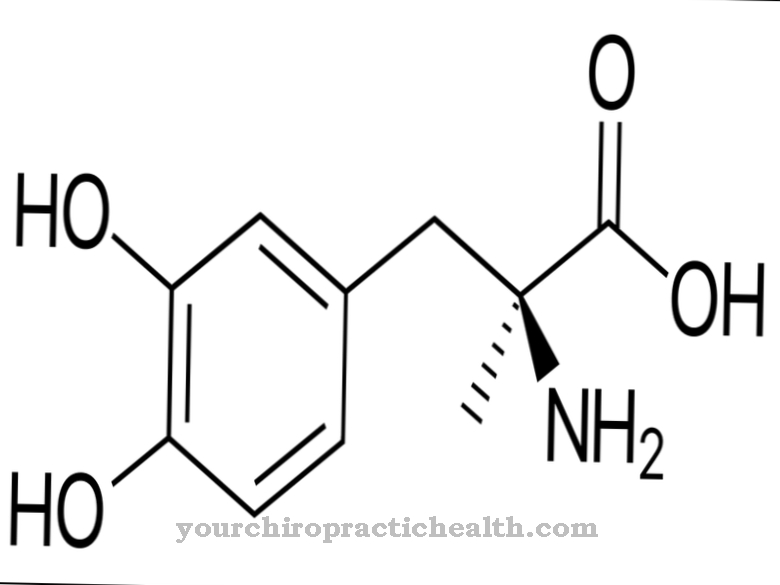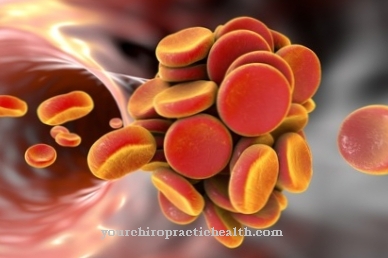Methadone is known as an active ingredient in the context of heroin withdrawal. The opioid has powerful pain relieving effects.
What is methadone?

Methadone is an opioid that is completely synthetic. The active ingredient gained notoriety as a substitute for heroin withdrawal. Methadone has been on the WHO list of essential drugs since 2005.
Methadone was developed in 1937 by the German chemists Max Bockmühl (1882-1949) and Gustav Ehrhart (1894-1971), who worked for I.G. Colors were active. In 1938, the active ingredient was registered for a patent. The analgesic effect of methadone was only established in 1942. In 1945, definitive proof of this effect was provided.
After the end of World War II, methadone came to the USA through patent and regulatory expropriation, where it was given its common name in 1947. The manufacturing rights could be acquired by any company, so that methadone was sold under different names. After I.G. Farben had been dissolved, the drug came onto the market there as a strong pain reliever.
The use of methadone as a substitute for heroin addiction began in the 1960s. The drug served as a substitute. In this way, patients should achieve sustainable heroin abstinence.
Pharmacological effect
Therapy for heroin addiction includes not only combating physical addiction, but also psychological dependence. After stopping the drug, the only thing left to think about is how to get the drug again. She also suffers from nausea, sweating, and tremors. In such a case, doctors also speak of craving.
Methadone is used to combat this effectively. The synthetic opioid binds to the same docking sites in the body as heroin. However, because it blocks the receptors for a longer period of time, the euphoria that occurs with heroin use turns out to be significantly lower and the typical "heroin kick" fails. Another effect is the alleviation or prevention of withdrawal symptoms.
If the correct methadone dose is achieved, the patient is able to cope with everyday life more easily. He also feels better without the withdrawal symptoms and regains control over his physical and mental powers. In this way he can return to a normal life step by step.
Methadone, which is administered orally, starts to work about 30 minutes after it is administered. About four hours after ingestion, the product reaches its maximum effect, which prevails for about 24 hours, provided the correct dosage has been chosen.
About 80 percent of methadone is absorbed in the intestine. From there it reaches the central nervous system, where it unfolds its positive effect. The drug is excreted through the kidneys.
Methadone has a faster effect when it is injected into the bloodstream to treat pain. Even then, the drug is broken down from the body via the kidneys.
Medical application & use
Methadone is used primarily to combat heroin addiction. In this way, the heroin is replaced by another drug that is administered in a controlled manner. Over time, the dose of methadone decreases more and more in order to gradually wean the affected person off of heroin.
As levomethadone, the opioid is also used to treat severe pain. This can be the case, for example, with cancer. It is also discussed whether methadone can have a positive influence on the fight against tumors. Individual cases suggest this, but so far no large-scale studies have been funded.
Methadone is administered orally by swallowing a syrup. The drug is taken once a day, which is done in the initial phase under the supervision of a doctor or pharmacist. After a certain period of therapy, there is the possibility that the patient may take his weekly methadone requirement under reserve within his own four walls.
If methadone is used for pain, it can be administered in the form of drops or injection solutions. The recommended daily dose varies between 2.5 and 7.5 milligrams.
You can find your medication here
➔ Medicines for painRisks & side effects
In the initial phase of methadone treatment, various side effects can be seen. First and foremost, this includes the attenuation that occurs in the first four to six weeks. The calming effect usually wears off as treatment progresses. There are also frequent sweats and constipation due to the effects of methadone on the autonomic nervous system. In the course of treatment, however, the nervous system becomes tolerant to methadone.
Other possible side effects include headache, nausea, vomiting, itching, dry mouth, slower breathing and sleep disorders. In such cases, lowering the methadone dose can be useful.
Methadone poisoning from an overdose is particularly worrying. This can sometimes even be life-threatening. However, the risk of dying from untreated heroin addiction is significantly higher.
The reasons for deaths from methadone are improper ingestion or consumption of other drugs such as alcohol. U.a. this increases the risk of respiratory paralysis. Methadone poisoning is noticeable through a flat, slow pulse, constriction of the pupils, drop in blood pressure, loss of consciousness and decreased breathing. In the worst case scenario, breathing may stop. If such symptoms appear, an emergency doctor must be notified immediately.
Methadone must not be administered if the patient suffers from severe liver disorders.












.jpg)

.jpg)
.jpg)











.jpg)